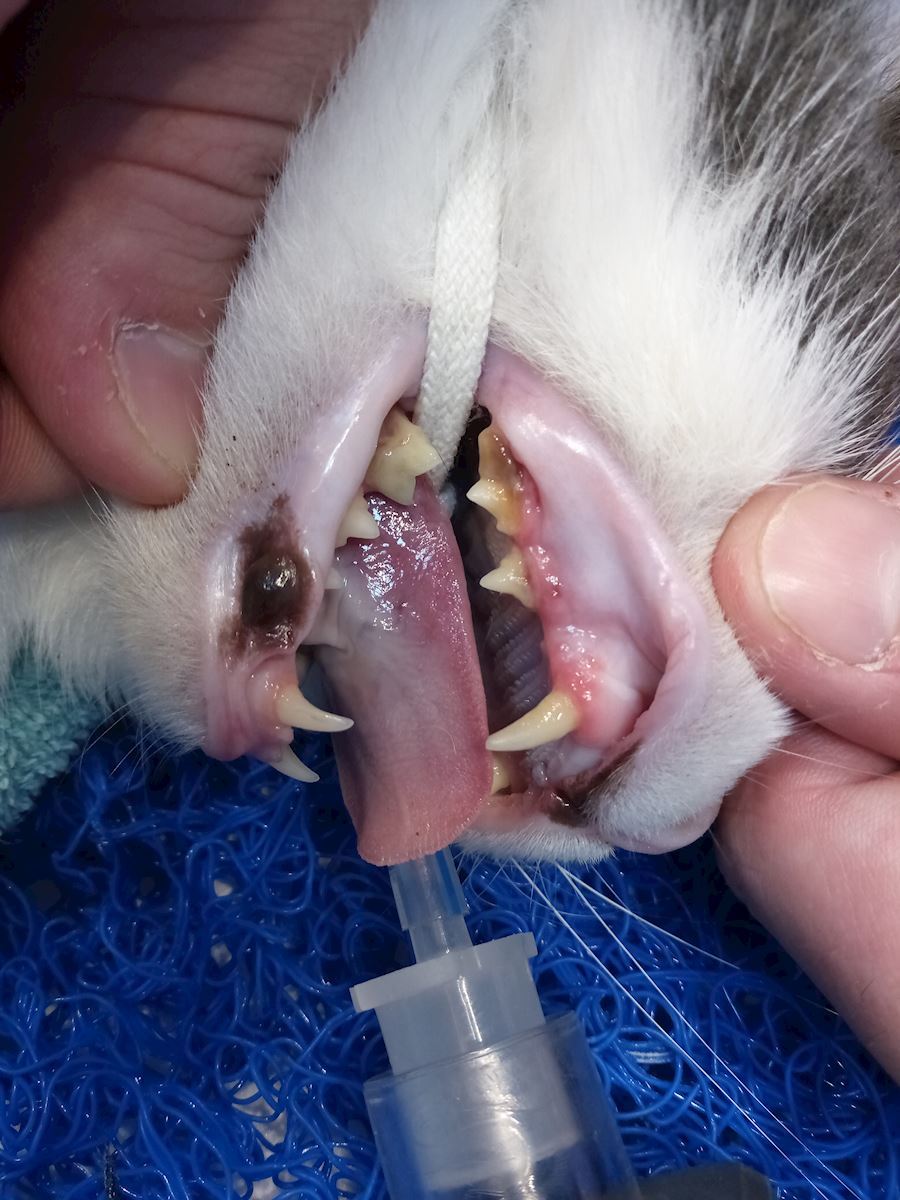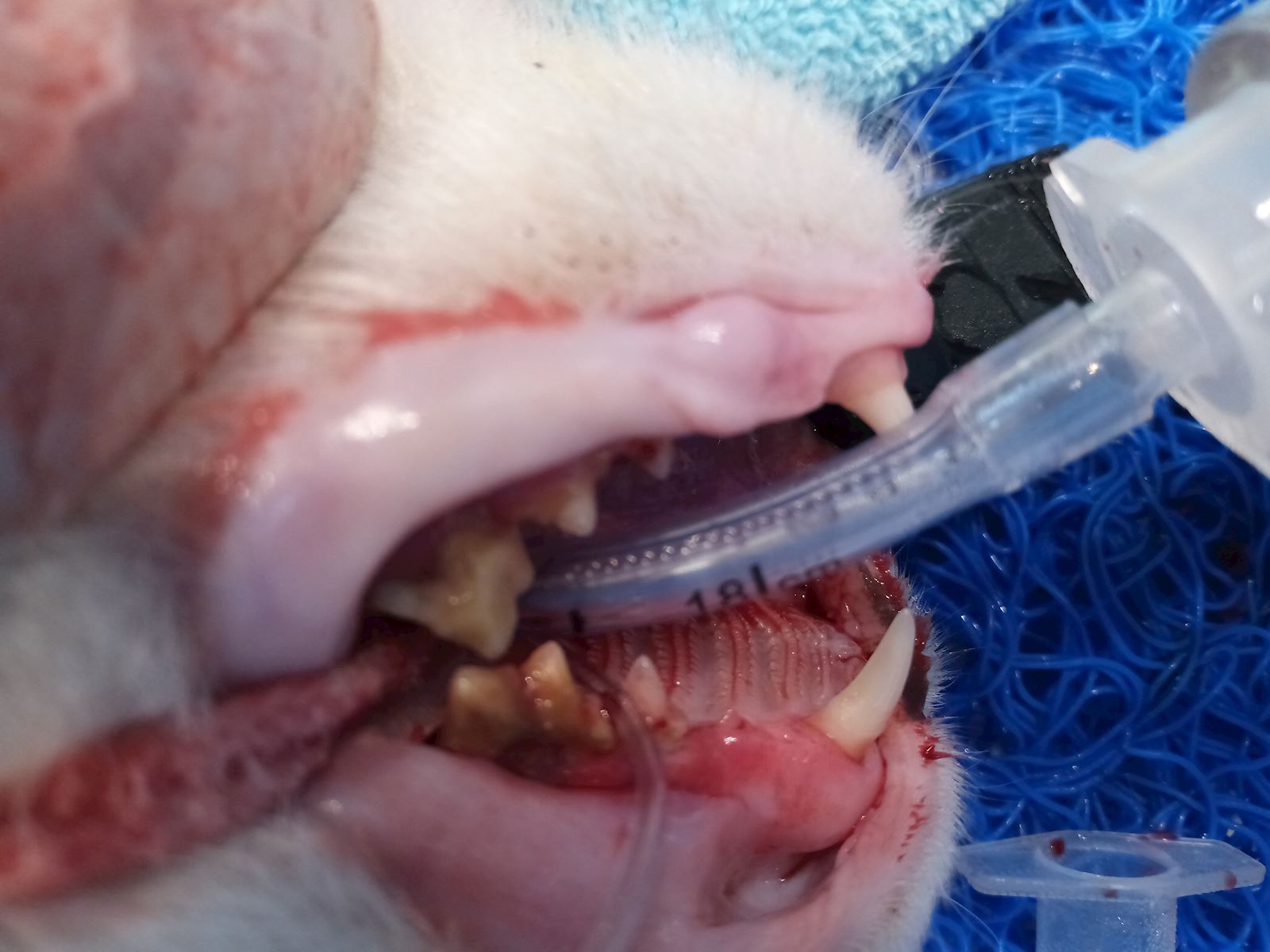Cat Dental – Full Mouth Extraction!
Why Teeth Removal is Best When Your Patient Has Feline Stomatitis
Know the signs of feline stomatitis and how to treat it!
Based on information By Veterinary dental specialist John Lewis.

Feline stomatitis is an exquisitely painful condition, and it can be a frustrating condition for pet owners and feline caregivers.


When I see a stomatitis patient for the first time, I try to set pet owners’ expectations early: stomatitis is a disease that we sometimes control rather than cure. However, with aggressive treatment, cures can be achieved.
Gingivitis or Stomatitis?
Sometimes it is difficult to discern whether a cat has stomatitis or merely gingivitis.
Clinical signs will often be a good indicator, even before you take a look in the mouth. Gingivitis is generally well tolerated by cats. However, cats with stomatitis will show signs of oral cavity disease progressing to anorexia, preference for canned vs. dry food, crying when yawning or eating, ptyalism and occasionally bloody oral discharge.
When trying to distinguish gingivitis from stomatitis, the key is the mucogingival line.
Routine gingivitis never extends beyond the gingiva, whereas stomatitis always extends beyond the mucogingival line into the alveolar and buccal mucosa.
Inflammation extending beyond the gingiva to the alveolar mucosa is referred to as rostral stomatitis or alveolar mucositis.
Cats with stomatitis also often show inflammation lateral to the palatoglossal folds in the caudal oral cavity (referred to as caudal stomatitis or caudal mucositis).
Inflammation associated with true gingivitis tends to be worst at the free gingival margin, with minimally inflamed gingiva toward to the mucogingival line. In cats with stomatitis, the full height of the gingiva is equally red, ulcerated and bleeding.
Juvenile cats sometimes develop severe inflammation of the gingiva that occurs shortly after the permanent teeth erupt, referred to as juvenile hyperplastic gingivitis. It is unclear what percentage of cats with juvenile gingivitis progress to full-blown stomatitis.
Juvenile gingivitis can be painful and can result in loss of attachment and mobility, especially of the incisor teeth.
What Causes Stomatitis?
Stomatitis may be due to a variety of causes, including ingestion of a caustic substance, uremia, viral exposure, plant foreign bodies, allergic responses to drugs or, most commonly, immune-mediated causes.
The cause of immune-mediated stomatitis is not clear, but it appears that cats develop inappropriate inflammation in the presence of even small amount of plaque accumulation. Many cats with stomatitis concurrently shed both herpesvirus and calicivirus.1
FeLV rarely plays a role in stomatitis (0-17 percent of cats with stomatitis have FeLV), but FIV may play a role (10-81 percent of stomatitis cats are positive for FIV), and FIV-positive stomatitis patients can be some of the more challenging stomatitis cases to get under control. Bartonella has received recognition as a possible etiologic agent, but a more recent manuscript showed no association between Bartonella and stomatitis.3
In my experience, azithromycin treatment of Bartonella-positive stomatitis cats does not usually resolve chronic oral inflammation.
Evidence suggests that calicivirus exposure may have long-term effects on the immune system, resulting in an aberrant immune response in some cats to bacterial antigens that accumulate in plaque. Therefore, plaque control is very important in cats with stomatitis.
Unfortunately, stomatitis cats are so painful that daily plaque control at home is not feasible. A professional dental cleaning will transiently remove plaque, but tooth brushing to prevent daily accumulation is not feasible in most cats due to severe pain.
Antibiotics provide transient improvements by decreasing bacterial plaque burden, but long-term use promotes bacterial resistance. Ultimate plaque control is removing the plaque retentive surfaces, i.e., the teeth.

Tooth extraction is the gold standard for stomatitis treatment due to its potential for a cure and due to possible long-term side effects of medical therapy. In one study that looked at outcomes, full-mouth extractions or partial-mouth extractions have been shown to provide the following outcomes:
Surgical Treatment
60 percent of cats were truly cured.
20 percent of cats were so improved that no further medications were needed.
13 percent of cats were improved but required continual long-term medication.
7 percent of cats did not improve despite extractions.
Extractions provided clinical resolution of oral discomfort in about 80 percent of cases. These percentages are based on a study of 30 cats, 28 of which had partial-mouth extractions.5 An outcomes study with larger patient numbers has been submitted for publication.
Full-mouth Extractions?
How do we decide whether to extract only the premolars and molars, or to perform full-mouth extractions? I tend to recommend full-mouth extractions.
If inflammation exists around the canines and incisors, these teeth should be extracted as well. If there is no inflammation around the canines and incisors, these teeth may be able to be retained. However, I’ve seen patients who did not respond to premolar and molar extraction, but extraction of the remaining canines and incisors resulted in improvement.
Also, just because the canines and incisors show no inflammation around them today doesn’t mean they won’t show inflammation in the future. Since it may be necessary to remove the canines and incisors at a later date, owners of stomatitis cats may pre-emptively choose to remove the canines and incisors in addition to the premolars and molars to avoid the need for future anaesthetic procedures.
Surgical Laser
Resection and ablation of diseased tissue with CO2 surgical laser has been described as an adjuctive treatment of refractory stomatitis.6 This technology requires multiple anaesthesia’s and may require placement of an esophagostomy tube after the first laser treatment to ensure caloric intake, especially if the patient is not eating well prior to surgery.
Treatment of inflamed tissue with a CO2 laser results in scar tissue formation, which may be less likely to become inflamed. Laser treatment is not considered to be an alternative to extractions, but rather an adjunctive treatment for cats with proliferative disease that do not respond to extractions.
Summary
Feline stomatitis is a disease that sometimes may be controlled rather than cured. Surgical treatment provides the best chance for a cure and is preferred over medical management to avoid potential side effects of medical therapy.

